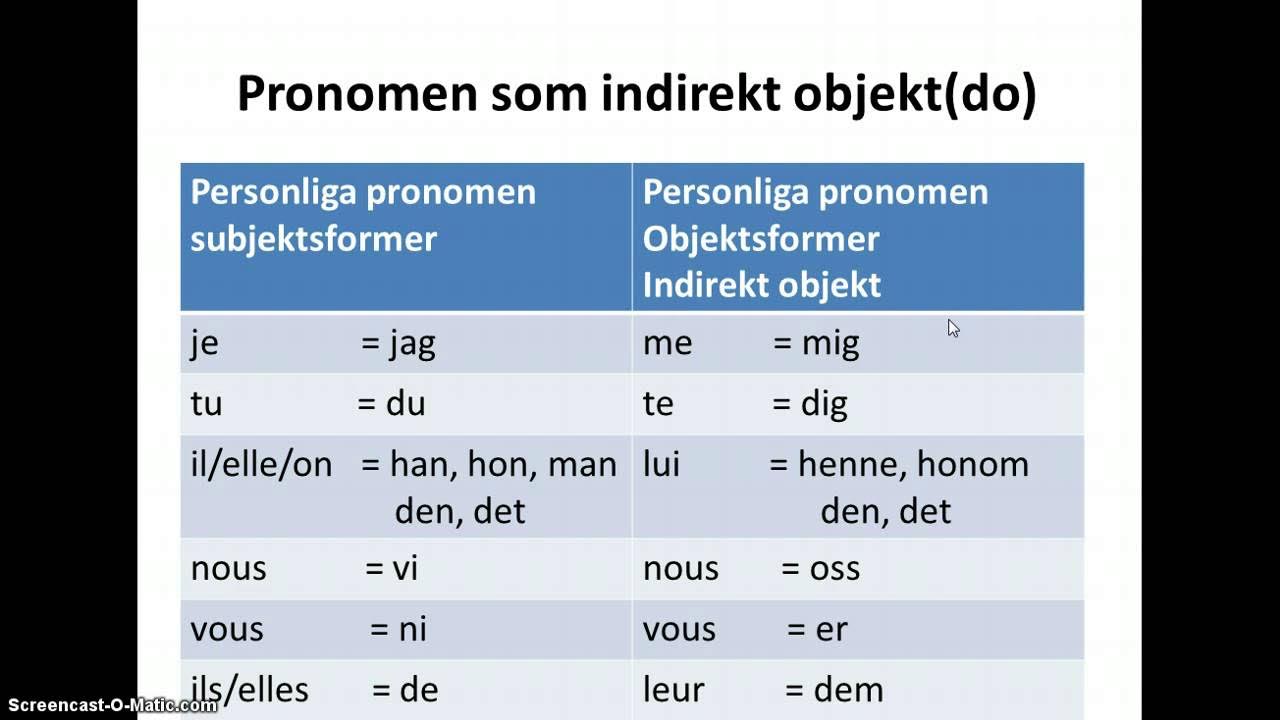Funções sintáticas dos pronomes o(s), a(s) e lhe(s) [Prof. Noslen]
Summary
TLDRThis video lesson delves into the use of personal pronouns in the oblique case, emphasizing their syntactic functions as direct and indirect objects in sentence structures. The instructor explains how these pronouns complement verbs, highlighting their role in both transitive and indirect transitive verbs. Through examples and detailed breakdowns, the video teaches viewers how to recognize and apply oblique pronouns effectively in different contexts. The session also includes tips on pronoun placement and clarifies common mistakes to help learners master the concept. It's an essential guide for anyone looking to improve their understanding of personal pronouns in grammar.
Takeaways
- 😀 The video focuses on personal pronouns of the oblique case and their syntactic functions in sentences.
- 😀 Oblique case pronouns can be used as direct objects, indirect objects, or nominal complements, depending on the sentence structure.
- 😀 The speaker emphasizes that the oblique case pronoun functions as a complement in the sentence, linking it to the verb.
- 😀 The video explains the distinction between oblique pronouns and articles, emphasizing that oblique pronouns complement verbs, while articles are used with nouns.
- 😀 The concept of verbal transitivity is highlighted, with oblique pronouns functioning as direct objects when the verb is transitive and does not require a preposition.
- 😀 Example 1: 'The father left some at school' shows how the oblique pronoun works as a direct object to complement the transitive verb 'left'.
- 😀 Example 2: The sentence 'The contract was of interest' illustrates how 'interest' requires a preposition, thus turning the verb into an indirect transitive verb with the pronoun 'her' functioning as an indirect object.
- 😀 The video stresses the importance of identifying whether a verb is transitive or intransitive to determine the type of object (direct or indirect) that the oblique pronoun represents.
- 😀 Oblique pronouns linked with prepositions are typically part of indirect object constructions, requiring syntactical analysis to determine their function.
- 😀 The speaker encourages viewers to subscribe to the channel and watch future videos, particularly those on pronoun placement and verb functions, for further clarification of these concepts.
Q & A
What is the focus of the video discussed in the transcript?
-The video focuses on the personal pronouns of the oblique case, specifically their syntactic functions and how they act as complements in a sentence.
What are the main syntactic functions of oblique case pronouns mentioned in the script?
-Oblique case pronouns can function as direct objects, indirect objects, or nominal complements within a sentence's syntax.
How does the speaker distinguish between direct and indirect object pronouns?
-Direct object pronouns complement transitive verbs that do not require a preposition, while indirect object pronouns complement verbs that require a preposition.
Can you explain the difference between an article and an oblique pronoun as mentioned in the video?
-An oblique pronoun like 'as' replaces a noun and functions as a complement, whereas an article like 'as' is used before a noun to specify it.
What example is used to illustrate the direct object function of the oblique pronoun 'as'?
-The example 'The father left the daughters at school' is used, where 'as' replaces 'the daughters' as the direct object of the verb 'left'.
What does the speaker say about the verb 'leave' and its relationship to oblique pronouns?
-The verb 'leave' is a direct transitive verb, meaning it requires a complement without a preposition, making oblique pronouns like 'as' function as direct objects.
How is the verb 'interested' used in the context of indirect objects?
-The verb 'interested' is an indirect transitive verb because it requires a preposition. In the example 'The contract interested him,' the oblique pronoun 'him' functions as the indirect object.
What key point does the speaker emphasize about pronoun placement in sentences?
-The speaker emphasizes that the placement of pronouns in sentences can influence whether they are functioning as direct or indirect objects, depending on the verb's transitivity and preposition use.
How does the speaker suggest viewers should approach studying oblique pronouns?
-The speaker encourages viewers to watch related videos and use the platform's resources to further study oblique pronouns, their functions, and proper pronoun placement in sentences.
What is the main takeaway the speaker wants the audience to remember about oblique case pronouns?
-The main takeaway is that oblique case pronouns serve as complements to verbs, functioning as either direct or indirect objects depending on the verb's properties, and this distinction is essential for understanding sentence structure.
Outlines

This section is available to paid users only. Please upgrade to access this part.
Upgrade NowMindmap

This section is available to paid users only. Please upgrade to access this part.
Upgrade NowKeywords

This section is available to paid users only. Please upgrade to access this part.
Upgrade NowHighlights

This section is available to paid users only. Please upgrade to access this part.
Upgrade NowTranscripts

This section is available to paid users only. Please upgrade to access this part.
Upgrade NowBrowse More Related Video
5.0 / 5 (0 votes)





